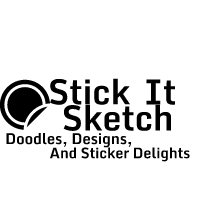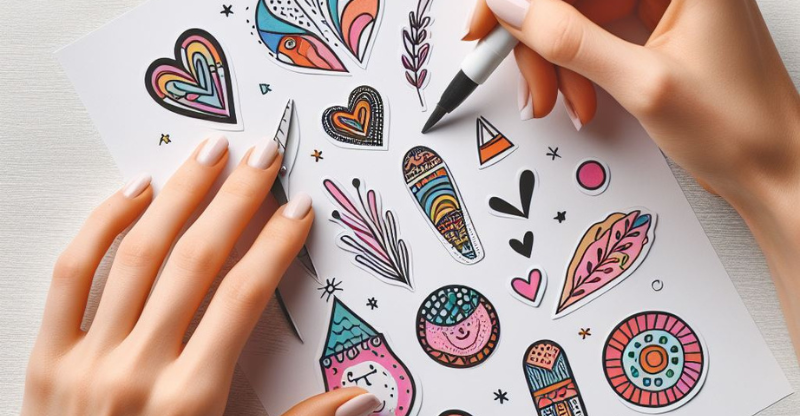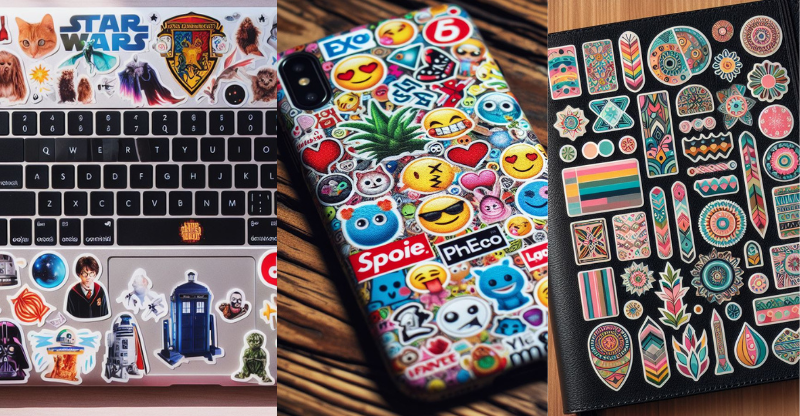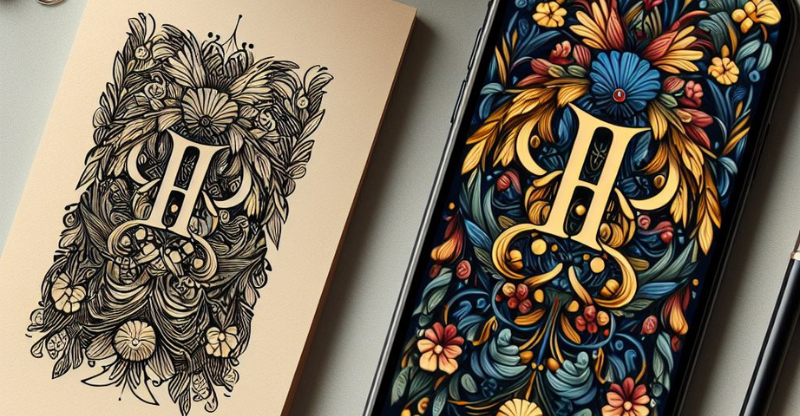Paper stickers, through their versatility and personalization, have been a staple in various applications ranging from marketing to personal use. Their adhesive backings and printable surfaces make them an ideal medium for creative expression and branding. As customizable tools, stickers allow for a wide range of designs, shapes, and sizes, adapting to the precise needs of individuals or companies. Stickers are not just ornamental; they can serve a practical purpose, such as labeling for organization, or they can be used to convey messages and unify groups under common interests or branding.

The evolution of paper stickers from their early use to the array of types available today demonstrates the growing importance of this medium in communication and design. With advancements in sticker printing techniques, it’s now easier than ever to produce high-quality, durable stickers that can withstand various environmental factors. The choice of materials is central to the sticker’s quality, affecting its finish, stickiness, and overall durability. The process of ordering and shipping has been streamlined, with services offering professional guidance to ensure satisfaction with the final product.
Key Takeaways
- Stickers provide a customizable way to express identity and convey messages.
- Advancements in materials and printing techniques enhance sticker quality and durability.
- Ordering and shipping processes are designed for customer satisfaction and ease.
History of Paper Stickers

The origins of paper stickers trace back to ancient times when market stall owners in Egypt utilized labels around 3000-300 BC. These were applied to stalls likely using animal-based glues to communicate product prices.
During the Middle Ages, following the invention of paper, stickers found new expressions. Aristocrats adopted rice paper stickers, often ornate and decorative, for sealing correspondence, a sign of status and authority.
The 1830s marked a pivotal point with Sir Rowland Hill’s introduction of adhesive paper, initially for categorizing items for more accessible information dissemination. It led to the popularization of stickers as a sensational tool for communication.
R. Stanton Avery is credited with creating the first self-adhesive sticker in 1935. His invention was a turning point, enabling stickers to be easily applied to a variety of surfaces without the need for separate glue. Avery’s contribution laid the groundwork for what would become ubiquitous in labeling and packaging contexts and personal use.
- Sticker Use:
- Ancient Times: Pricing and information labels in marketplaces.
- Middle Ages: Nobility used stickers to seal and embellish letters.
- 19th Century: Advancements in adhesive technologies boosted sticker production.
- 1935: Introduction of the self-adhesive sticker by R. Stanton Avery.
Asian contributions to the sticker history should not be overlooked, with intricate woodblock printing techniques yielding “Monyo” paper stickers for both practical and decorative purposes, advancing personalization and the artistic elements of paper stickers.
As they evolved, these adhesive labels gained universal utility, cementing themselves into the fabric of modern society through various applications in marketing, art, and personal expression.
Types of Paper Stickers

Paper stickers come in various forms, each designed to meet specific needs and preferences. They range from customizable options to pre-cut shapes, accommodating a wide array of applications.
Custom Stickers
Custom stickers allow for a high degree of personalization with images, text, and shapes tailored to the user’s requirements. Businesses often use these to enhance brand visibility or to deliver targeted messages.
Personalized Stickers
Personalized stickers are similar to custom stickers but are often used for individual purposes. They typically feature names, special dates, or personal artwork, making them ideal for events like weddings or as personalized labels.
Sticker Sheets
Sticker sheets are collections of stickers organized on a single sheet, providing a convenient way to access multiple stickers at once. Users can find them in various themes, from holiday motifs to educational content.
Die Cut Stickers
Die cut stickers are cut to the exact shape of the design, creating a custom contour around the sticker’s edge. They offer a professional appearance and are frequently used for logos or branding materials.
Kiss Cut Stickers
Kiss cut stickers are similar to die cut stickers but are easier to peel off from the backing paper, thanks to their light cut that leaves the backing intact. These stickers give extra white border space around the design which can be used for additional design or text.
Planner Stickers
Planner stickers are designed specifically for organizing and decorating planners. They often come pre-printed with dates, reminders, or motivational quotes and are available in various finishes to suit different planning needs.
Design Considerations

When creating paper stickers, one must pay careful attention to certain key design elements that ensure the final product is both aesthetically pleasing and functionally effective. These design elements include graphic design, color schemes, and fonts and typography, each playing a crucial role in a paper sticker customization and brand communication.
Graphic Design
Graphic design is the cornerstone of creating a sticker that stands out. The design should be more than just visually appealing; it must also convey the intended message effectively and be scalable to fit various sizes without losing clarity. This involves incorporating appropriate images and backgrounds that complement the sticker’s purpose. One must choose imagery that resonates with the target audience and aligns with the sticker’s goals.
Color Schemes
Color plays a powerful role in sticker design, as it can influence emotions and perceptions. Selecting a color palette that reflects the brand identity or the message is crucial. It’s recommended to use a consistent color scheme throughout the sticker design to maintain cohesiveness. Moreover, contrast should be used wisely to ensure that text and design elements are easily discernible.
Fonts and Typography
Finally, fonts and typography greatly affect the sticker’s readability and impact. One must choose fonts that are legible at various sizes and complement the overall design. It is important to ensure that the typography reflects the personality of the brand or message. For instance, a more serious tone might require a clean, sans-serif font, whereas something more playful could benefit from a quirky, handwritten typeface. It’s essential for these textual elements to be well-integrated with the sticker’s graphic elements for maximum effect and personalization.
Sticker Printing Techniques

Sticker printing has evolved with advancements in technology, offering multiple methods to create high-quality, vibrant stickers. Two prominent techniques are digital printing and inkjet printing, each suitable for different needs and outcomes.
Digital Printing
Digital printing is a method where digital printers directly apply the ink onto the sticker material. It stands out for its precision and capability to handle complex designs with ease. Digital printing allows for a high level of detail, making it ideal for stickers that require fine text or intricate imagery. It’s also favored for its efficiency in smaller runs, meaning it’s cost-effective for low to medium quantities.
- Advantages:
- Fast processing and turnaround time
- Ideal for complex designs with multiple colors
- No need for printing plates
- Limitations:
- Generally, a higher cost per sticker compared to bulk methods
- Limited to the size of the digital printer’s bed
Inkjet Printing
Inkjet printing utilizes an inkjet printer to spray tiny droplets of ink onto the sticker material. It’s a popular choice for at-home printing due to the widespread availability of inkjet printers. Inkjet printing is great for creating photo-quality stickers and custom designs in small quantities.
- Advantages:
- Accessible for personal use and small businesses
- Produces high-quality, photographic prints
- Limitations:
- Ink can be less durable than other printing methods
- The cost of ink cartridges and suitable sticker paper can add up
Sticker printing techniques cater to various preferences and purposes, whether one needs a handful of custom stickers at home or a professional batch for commercial distribution. Digital and inkjet printing each bring unique strengths to the table, aligning with the diverse demands of sticker creation.
Materials and Quality

Choosing the right sticker paper and finish type is crucial for ensuring the longevity and appearance of a sticker. These factors directly affect the sticker’s tactile feel, elegant appearance, durability, and print quality.
Sticker Paper Options
Vinyl: Vinyl is lauded for its durability and is resistant to weather and tearing. Ideal for outdoor use, vinyl stickers last longer than their paper counterparts. They can be applied to various surfaces due to an even texture and slight flexibility.
Polyester: Polyester stickers offer extreme durability and high tear resistance, although they are not recyclable and can be more expensive than vinyl.
Paper: Paper stickers are cost-effective and excellent for indoor use. They are not waterproof, and thus, their usage is more suitable in controlled environments where moisture or wear is minimal.
Finish Types
Glossy: A glossy finish allows for vibrant colors and creates a shiny appearance, enhancing the sticker’s visual appeal. It is frequently used to attract the eye in marketing and branding applications.
Matte: A matte gold finish provides a non-reflective surface, which can be written on with standard pens and pencils. It’s sought after for its classy and elegant look.
Laminate: Laminating a sticker adds a protective layer, thereby increasing its lifespan. It protects against UV rays, scratches, and water, thus preserving the quality and colors of the sticker print. Laminate can come in both gloss and a matte finish options, allowing for versatility in design and function.
Sizing and Customization

When creating custom paper stickers, one has the flexibility to select from a vast array of custom shapes and sizes to fit their specific needs. This customization allows for personalization which is ideal for branding, promotional events, or personal projects.
Custom Shapes and Sizes
Whether it’s for a company logo, special event, or a personal design, custom shapes are essential for making a sticker stand out. Stickers can be produced in virtually any size, providing flexibility and precision for the intended use. Options range from small sizes suitable for product labeling to larger sizes perfect for bumper stickers or window decals.
Custom stickers and labels provide a powerful way to convey a message, whether it is for business identity, instructions for products, or simply for decoration. The ability to create custom stickers in any shape and size means that they can be perfectly tailored to the task at hand, ensuring both form and function are addressed.
Packaging and Presentation

Proper packaging and presentation are essential for making a lasting impression on consumers. When it comes to delivering product information and creating brand identity, paper stickers serve as a versatile tool.
Labeling Packages
Labeling packages effectively combines aesthetics with functionality. Paper stickers can be customized to fit various shapes and sizes, adapting to different packaging needs. Companies like OXO Packaging provide a range of customizable paper stickers that enhance brand visibility. A well-designed label communicates essential product information clearly while also serving as a brand ambassador on retail shelves.
Protective Packaging
While labels contribute to brand awareness and product information, protective packaging ensures that the product reaches the consumer in perfect condition. The stickers themselves require protection to maintain their integrity against handling and environmental factors. PrintPlace offers stickers in materials suitable for withstanding these challenges, ensuring that the label remains intact from the packaging line through to the end consumer. Thus, protective packaging and high-quality sticker materials together preserve both the product and its accompanying information.
Ordering and Shipping
Ordering paper stickers is straightforward, with options tailored to individual needs in terms of quantity and pricing, while shipping details often include services such as free shipping to provide an affordable and convenient experience.
Quantity and Pricing
When purchasing paper stickers, customers can expect a pricing structure that typically includes bulk order discounts. The cost per sticker decreases as the quantity of stock increases, making it more affordable for businesses and individuals to place larger orders. For instance:
- 1-100 stickers: $0.50 each
- 101-500 stickers: $0.45 each
- 501-1000 stickers: $0.40 each
- 1001+ stickers: Customized pricing
Free shipping may be available on larger orders, adding to the savings.
Shipping Details
Once an order is placed, customers are provided with shipping options. Most retailers offer a range of shipping methods to meet various timelines and budgets. A common offering among these options is free shipping, which is typically available for standard delivery. For example:
- Standard Shipping (5-7 business days): Free
- Expedited Shipping (3-5 business days): Flat rate
- Priority Shipping (1-3 business days): Premium rate
These options aim to accommodate both the need for cost-effectiveness and the urgency of certain orders.
Support and Services
When it comes to paper stickers, support encompasses a range of services, from providing customer assistance to offering design resources. These services are crucial for both beginners and seasoned creators who are looking to produce high-quality stickers, whether for personal use or for a small business.
Customer Service
Reliable customer service is a cornerstone for sticker retailers and manufacturers. Customers typically expect prompt and helpful assistance from providers, addressing inquiries ranging from product information to order issues. For example, Etsy shops often pride themselves on their individualized customer service, swiftly handling any purchase concerns and offering personalized guidance.
Avery WePrint, a notable player in the sticker printing industry, is recognized for its commitment to customer satisfaction. They undertake to provide detailed instructions for their products and extend support for any printing challenges customers may face.
- Available Support Channels:
- Phone
- Live chat
- Common Support Requests:
- Order status
- Printing help
- Product information
Design Templates
Templates serve as an invaluable resource for streamlining the sticker creation process. A variety of platforms offer accessible design templates that cater to different themes and occasions. Canva is a well-known platform providing a broad array of easy-to-use sticker templates. These templates allow users to create custom designs with minimal effort, removing the need for advanced design skills.
Avery WePrint also comes into play here, offering an extensive collection of templates that are compatible with their labels and stickers. This resource is vital for ensuring that designs are appropriately aligned and formatted for printing. Moreover, Avery often provides freebies in the form of templates to help users get started on their projects.
- Template Usage:
- Customization of pre-designed templates
- Designing from a blank template
- Template Features:
- Variety of sizes and shapes
- Themed designs for different purposes
Marketing Your Stickers

Effective sticker marketing can significantly enhance brand visibility and offer a creative way to get a message across. It is vital for businesses to design stickers that not only stand out, but also align with their brand, image, identity, and marketing goals.
Stickers for Small Businesses
Small businesses can utilize custom-made stickers to increase recognition and develop a cohesive brand identity. Stickers act as miniature billboards; they are cost-effective and can be distributed easily alongside products or at local events. Creativity is key, and businesses should focus on designs that represent their values and aesthetics. For example, premium waterproof stickers with a matte or glossy finish can drastically improve the user experience and brand recall.
Promotional Stickers
Promotional stickers serve as powerful marketing tools when they are thoughtfully designed and strategically distributed. Full color custom stickers can be created to fit various shapes and sizes, catering to the brand’s specific needs. Companies should aim to create designs that are eye-catching and deliver their message clearly and concisely. Utilizing them in giveaways or events can increase the brand’s outreach and provide an on time or free guarantee, ensuring their promotional campaigns adhere to schedule and budget constraints.
It is important for businesses to consider the quality and placement of these stickers to maximize their impact—from product packaging to guerrilla marketing tactics in public spaces.
Using Stickers for Personalization

Personalization through stickers offers a creative way to express individuality and brand identity. They can enhance the aesthetics of products and personal items, making them both unique and recognizable.
Printable Stickers
Printable stickers serve as a flexible medium for personalization. They allow individuals and businesses to convert any artwork or text into adhesive labels that can be easily applied. With the use of sticker paper, these stickers can be printed using home printers or professional services, making the process accessible and convenient. For perfect kiss-cut stickers, one might start designing on Avery by choosing a template or uploading original artwork before customization.
Sticker Personalization
The scope of sticker personalization spans from simple name labels to intricate, custom designs that reflect a person’s interests or a company’s brand. Tools like Cricut machines expand the possibilities, allowing the creation of high-quality, personalized stickers cut from various types of vinyl and paper. Jennifer Maker details the process for crafting these stickers using a Cricut, which can cut through different materials providing a professional finish. Whether it’s for organizing, branding, or just for fun, personalization ensures that each sticker represents the unique preferences or identity of its creator.
Guarantees and Quality Promises
When selecting paper stickers, consumers should look for guarantees that assure the longevity and durability of the product. Manufacturers that use high-quality materials create stickers that can withstand wear, tear, and environmental factors. It is essential that these stickers maintain readability over time to ensure that warranty or product information remains intact.
Professional production processes contribute significantly to the final quality of paper stickers. A reputable provider typically offers customer service to address any concerns about sticker quality and to assist with any issues post-purchase. In the realm of guarantees, providers may include a replacement policy for any stickers that do not meet the promised standards.
Customers are encouraged to look for service guarantees that might include:
- Quality Assurance: Confirmation that stickers have passed rigorous quality checks.
- Material Durability: Guarantees regarding resistance to fading and abrasion.
- Adhesive Longevity: Assurance of the sticker’s ability to adhere over time.
Service guarantees often encompass:
- Customer Support: Access to professional and helpful assistance.
- Refund Policy: Options available if the product fails to meet expectations.
In summary, robust guarantees and promises of quality signal confidence in a product’s performance and the manufacturer’s commitment to customer satisfaction. When these elements are clearly articulated, customers can make informed decisions and feel secure in their purchases.
Conclusion

In the diverse world of adhesives and personalization, paper stickers stand out due to their ubiquitous nature and flexibility. They are not only popular for personal use on items like laptops and water bottles but also serve significant roles in branding and marketing strategies.
- Environmentally conscious consumers should note that some sticker materials and adhesives can be less eco-friendly.
- Businesses are recommended to consider the durability and application of different sticker types based on their specific needs.
For creative projects, custom essay stickers offer a distinct way to express individuality or disseminate succinct messages. They can be found in a variety of designs, including historical figures like Alexander Hamilton, or carry motivational phrases to inspire productivity.
In educational settings or organizational environments, conclusion stickers may be used to highlight the end of sections in notebooks or documents, providing a clear visual demarcation. They serve functional purposes and can add a touch of personality to otherwise mundane paperwork.
It is clear that paper stickers provide a simple yet powerful means of expression, whether they adorn personal belongings or serve as tools in professional or educational contexts. The selection available caters to an extensive range of preferences, emphasizing the versatility of this form of embellishment.




